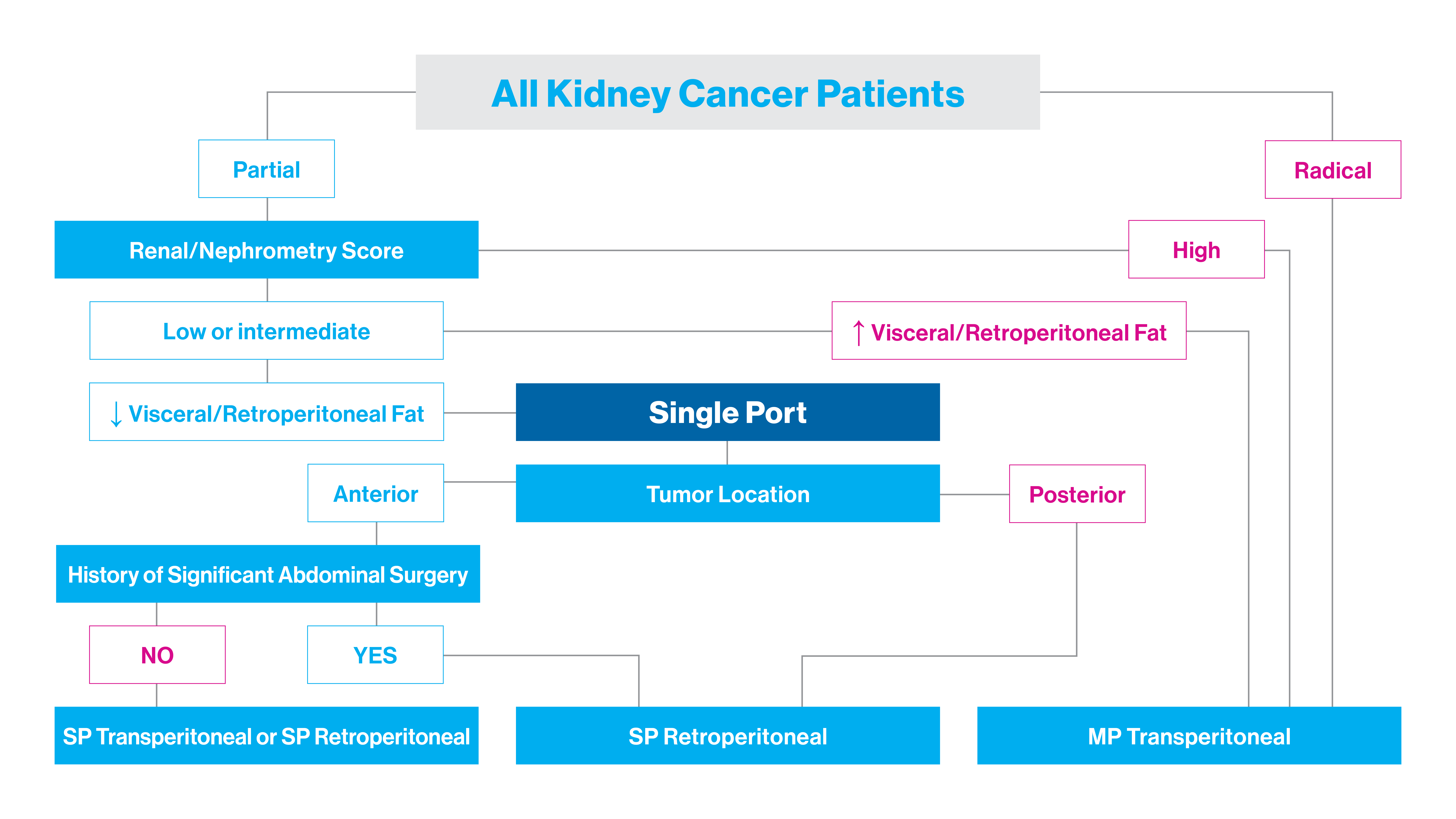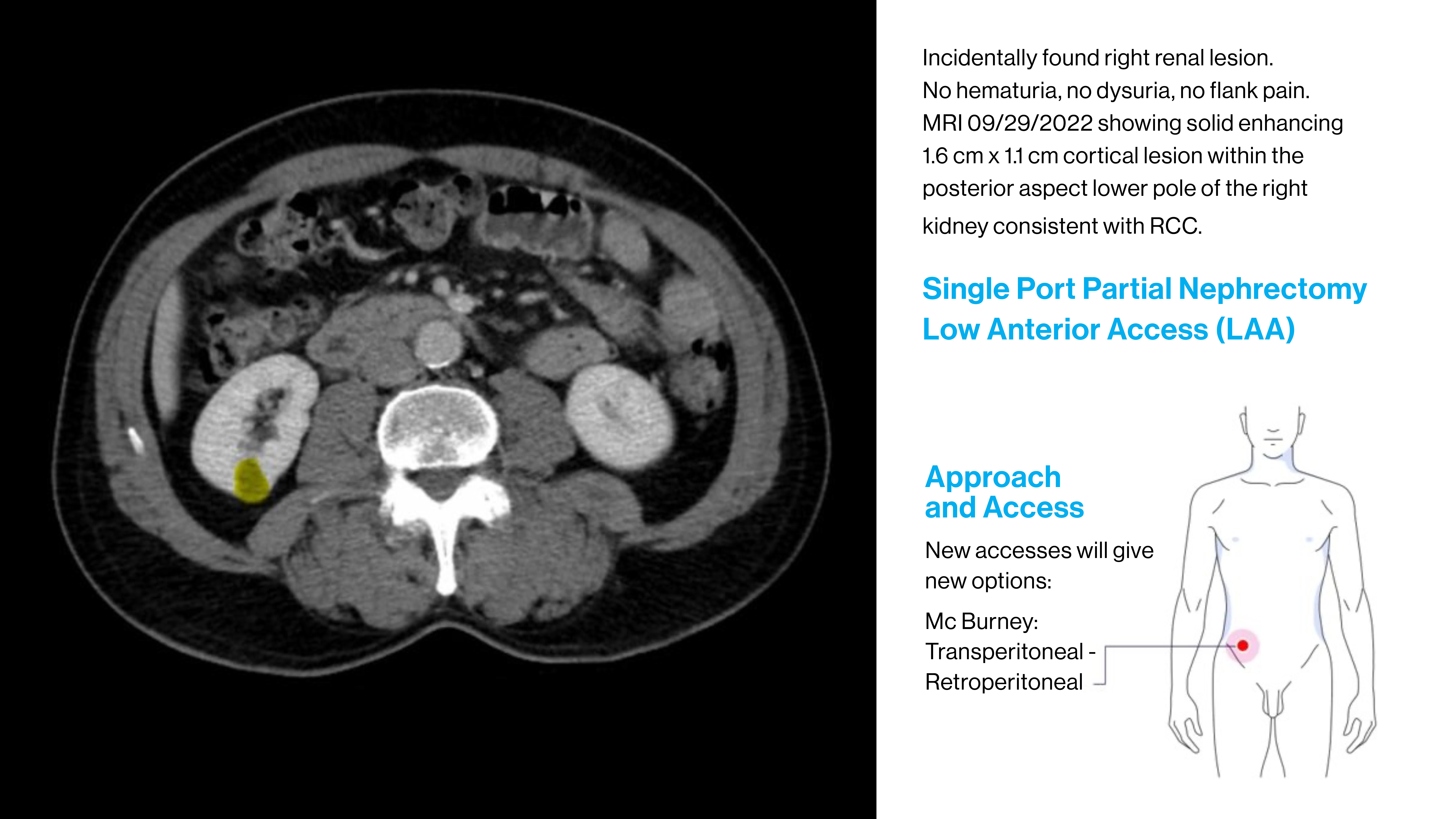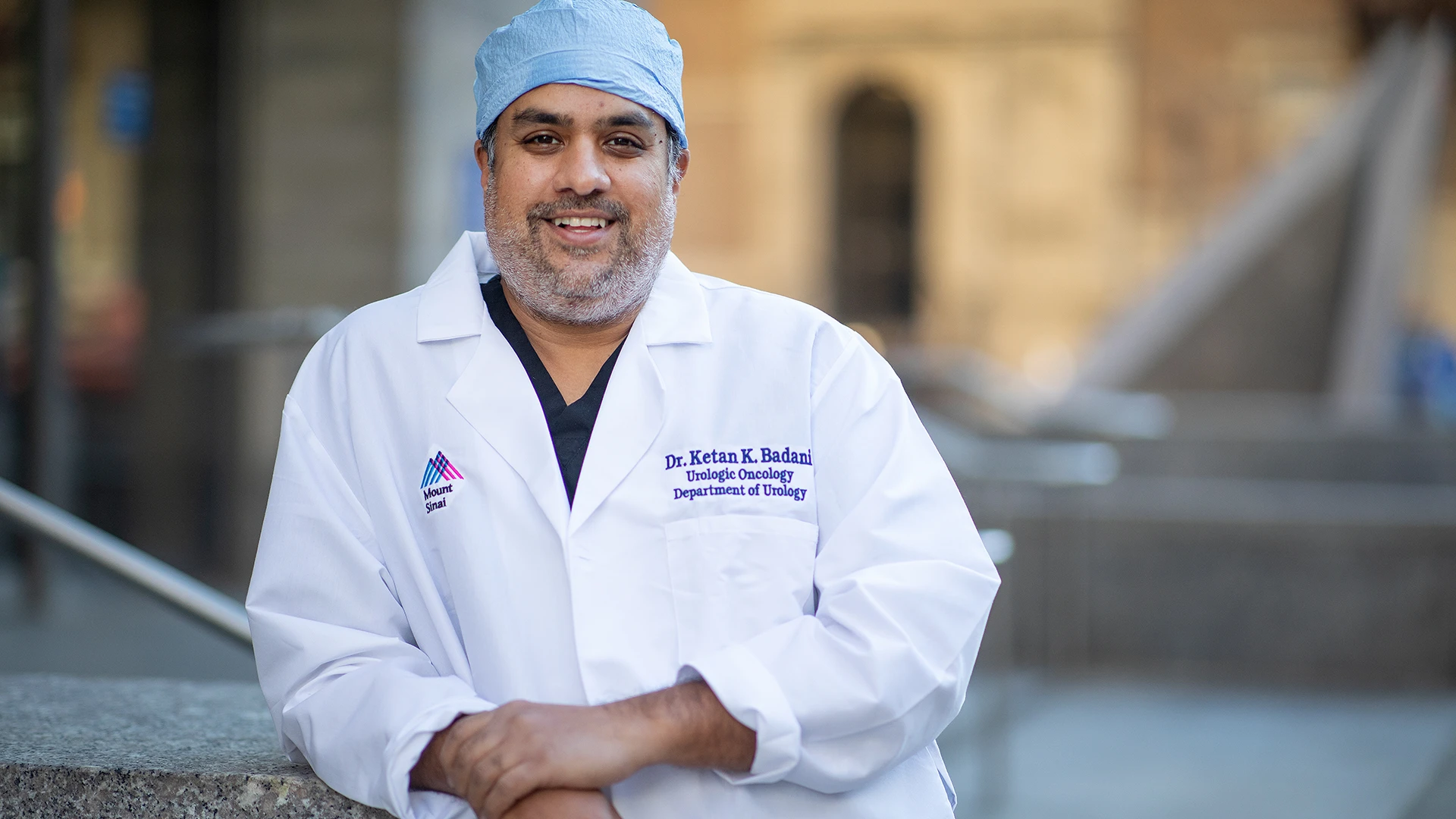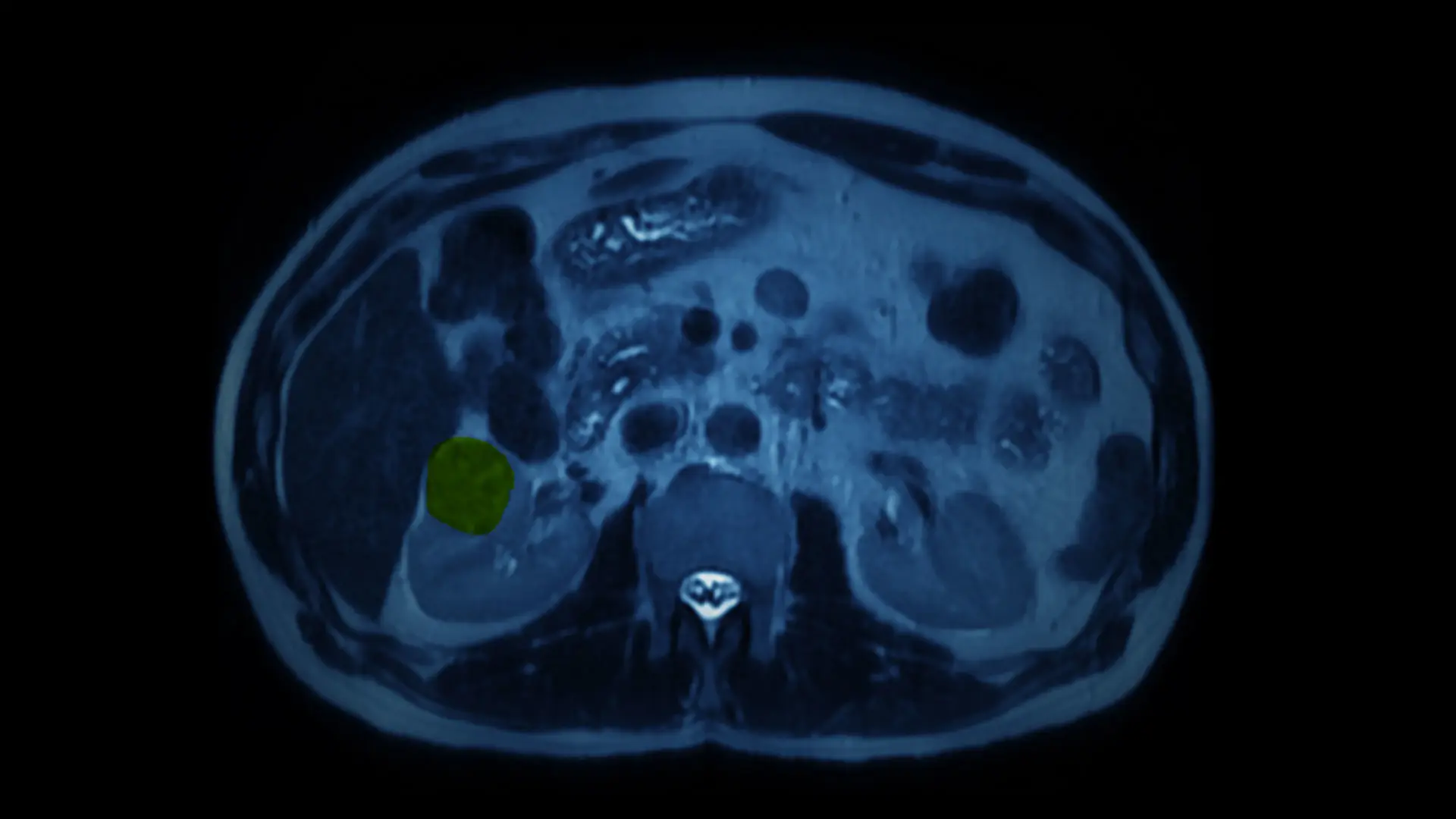A new single-port system for robotic nephrectomy is providing surgeons with more options for customizing treatment.
To guide surgeons in selecting the appropriate treatment for each patient, Ketan Badani, MD, FRCS (Hon.), Director of the Comprehensive Kidney Cancer Program and Chief of Surgical Innovation and Strategy at the Mount Sinai Health System, developed a patient-focused, clinical decision-making algorithm to determine the optimal approach between single-port and multiport robotic surgery. This advance ushers in a new era of evidence-based, personalized surgical treatment for kidney cancer.
Robotic surgical systems debuted 20 years ago, and the platform remained relatively unchanged for many years, says Dr. Badani, who is also Professor of Urology at the Icahn School of Medicine at Mount Sinai and Vice Chair of Urology and Robotic Operations for Mount Sinai. The traditional system used a multiport approach, with surgeons accessing the kidney via instruments inserted through multiple abdominal incisions.

To guide surgeons in selecting the appropriate treatment for each patient, Ketan Badani, MD, FRCS (Hon.), developed a patient-focused, clinical decision-making algorithm to determine the optimal approach between single-port and multiport robotic surgery.
A pioneer in robotic kidney surgery, Dr. Badani helped establish an alternate approach, using the multiport system to access the kidney from the back rather than the front. “We had two options: transperitoneal or retroperitoneal. But we still only had the same multiport system,” says Dr. Badani, who leads nationwide in the number of robotic kidney procedures performed.
In 2019, a new single-port surgical robot became available, enabling surgeons to perform partial and total nephrectomies with multiple robotic arms inserted through a single incision. “For the first time in the history of robotic surgery, we have more than one platform to choose from,” Dr. Badani says.
For each patient, surgeons must now decide which robotic system to use and how best to access the kidney—through the abdomen, back, or, in the case of the single-port system, through a lower abdominal “bikini line” incision.
The expanded options are a welcome development. “We’re finally able to customize how we do robotic surgery,” Dr. Badani says.

This slide describes a kidney cancer patient who is a good candidate for multiport robotic surgery.

This slide describes a kidney cancer patient who is a good candidate for single-port robotic surgery.
A New Tool for Nephrectomy Decision-Making
To guide surgical decisions with data, Dr. Badani and his colleagues developed an algorithm to determine the best approach based on several characteristics, including tumor size and complexity, whether a partial or radical nephrectomy is required, and patient-specific anatomical details. The team developed the algorithm over 18 months, making continued improvements as they increased their utilization of the single-port platform for kidney cases.
“We noticed trends in case complexity based on tumor and patient anatomy. As such, the algorithm we use today is not necessarily the same algorithm we used when we embarked on improving our single-port program a year ago,” he says.
In general, Dr. Badani has found that radical nephrectomy is preferentially performed with the multiport platform. In cases of kidney preservation, the decision depends on tumor complexity, the amount of fat around the kidney, and a history of significant abdominal surgery. Multiport surgery is also preferentially performed for complex tumors or for patients with significant fat around the kidney. Single-port surgery can be used for patients with low- or intermediate-complexity tumors, with both anterior and posterior approaches.
The algorithm provides a flow diagram of optimal approaches that physicians can use to inform conversations with patients before scheduling surgery.

Ketan K. Badani, MD, FRCS (Hon.), Professor of Urology and Director of the Kidney Cancer Center at the Icahn School of Medicine at Mount Sinai
“Now, we can sit with the patient and engage in shared decision making about what surgical approach will have the greatest benefits for their situation,” Dr. Badani says. He has presented the work at national and international meetings and is in the process of publishing his findings so that the tool is available to physicians more broadly.
“There are no current society-based guidelines on choice of robotic approach for kidney surgery,” he says. “We hope our algorithm will be a helpful tool for surgeons as the first to systematically describe considerations for single-port versus multiport surgery.”
Robotic Kidney Surgery Research at Mount Sinai
The new algorithm is one of many pioneering projects Dr. Badani is involved in related to robotic nephrectomy.
Soon after the single-port system was launched in 2019, Dr. Badani spearheaded the creation of a Single Port Advanced Research Consortium (SPARC) for robotic kidney surgeries. The consortium includes about a dozen medical centers, including Mount Sinai, that are using the single-port system and sharing outcomes data.
The consortium is already producing important findings. A study published in the Journal of Endourology in 2022 showed robotic-assisted single-port partial nephrectomy was comparable to the multiport system in terms of estimated blood loss, operative time, positive margin rates, complication rates, and length of hospital stay.
The consortium members will continue to collect data, aiming to demonstrate that the new algorithm effectively guides surgeons toward approaches with the greatest benefits and fewest risks. These evaluations will become more complex in the months and years to come, with perhaps as many as 20 new robotic surgery systems now in development or preparing to launch, Dr. Badani says. His algorithm could be adapted to guide surgical decisions as new tools become available to surgeons.
As a leader in robotic nephrectomy, the Department of Urology has much to contribute to developing best practices for robot-assisted nephrectomies.
“Mount Sinai’s program is one of the highest-volume centers for robotic nephrectomy in the country. Even with our extensive experience, we are always trying to find ways to improve on what we do,” Dr. Badani says. “To do so, we must critically evaluate the use of these technologies.”
